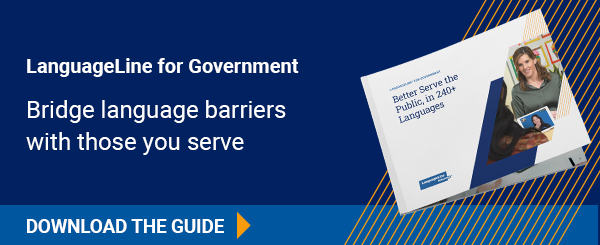
Gabriela Acosta and her husband, Rodrigo Reyes, moved to Tulsa, Oklahoma, from Central Mexico in 2013. Life was hard enough before the pandemic: They had six kids and they were navigating a world whose dominant language wasn’t theirs.
Their children’s school district shifted to online learning. Though in-person school has since resumed in the district, much of their classwork remains online and parent-teacher conferences are conducted remotely and in English.
Researchers worry that the country’s already disadvantaged students, including those who are English Language Learners, have fallen further behind. Reports suggest that English learners across the U.S. have struggled to connect with their remote classrooms.
To Gabriela, the campus closures “felt like a sudden, overwhelming loss of control.”
The Reyes Acosta family was fortunate -; they had a school system that quickly implemented translation and on-demand interpretation through LanguageLine Solutions®. Teachers and social workers quickly focused on effectively communicating with limited-English families, as district educators aimed to affirm the value of students’ native languages while trying to help them learn English.
READ MORE: How Schools Can Easily Translate IEPs for English Language Learners and Their Families
Early signs show that teacher planning, support for families outside the classroom, and an investment in translation and interpretation are helping families like the Reyes Acostas. Similar efforts could make a difference in any district that teaches English learners. In Tulsa, support for English Language Learners ranges from the academic to the practical, including breakout virtual classrooms.
In Tulsa Public Schools, nearly a quarter of students are English Language Learners, most of them Spanish speakers. TPS data indicates that the district’s English Language Learners engaged with virtual schooling over the past year at higher rates than did other student groups.
Early anecdotal evidence suggests Tulsa’s strategies had a positive impact.
Bearing the brunt
Poor Americans and people of color — who together account for the vast majority of English Language Learners —felt the brunt of COVID-19’s devastation. Most of Tulsa’s predominantly Latino English learners fall in this category.
Tulsa distributed 21,000 laptops in the spring of 2020 and another 14,000 in early September. Additionally, a Spanish-speaking Latina social worker has been valuable. Even now, she regularly checks on the Reyes Acostas to provide emotional support, clothing, food and other basic necessities.
The family connected with the social worker through Family & Children’s Services (F&CS), a mental-health clinic that’s long worked with Tulsa schools. A recent analysis by the Migration Policy Institute suggests such partnerships play an especially critical role in English language learners’ ability to learn at a distance.
LEARN MORE: How Schools Can Manage the Translation of IEPs
Tulsa educators who serve English learners rely on LanguageLine to connect callers with professional interpreters in real time. The interpreters are available on-demand in more than 240 languages at the touch of a button. LanguageLine also provides translation of written materials.
The communication has made at-home schooling far more manageable, parents said. A body of research indicates that such connections can pay dividends. “It means the teachers are truly interested in the kids’ education,” Acosta said of those interactions with interpreters. “They didn’t just say, ‘OK, the kids are not in school physically now, so it’s no longer my problem.’”
English learners are more likely to succeed when their content is grade-level appropriate but adapted to accommodate their English proficiency, said Tim Boals, who cofounded and directs WIDA, a University of Wisconsin-based resource hub for teachers who work with multilingual learners.
LEARN MORE: Two Ways Educators Can Add an Interpreter to a Video Call
These added layers explain why teaching these students remotely can be especially tricky. Interpreters can work with the teacher to help make the material understandable to the student.
Rebecca Adrian, an elementary level English-language development educator in Tulsa, explained, home-based learning enables teachers to encourage students’ literacy in their native language — which research shows is another key component in success.
“If you can read in your first language, not only can you stay connected with your family, but you can also develop a whole new range of information, of interests, that you didn’t know you had,” Adrian said.
Regardless of the particular tool, Tulsa teachers stressed that teaching in the English language learner’s home language is an asset. Mastering literacy and vocabulary in one’s native tongue can help a student develop those skills in English.

